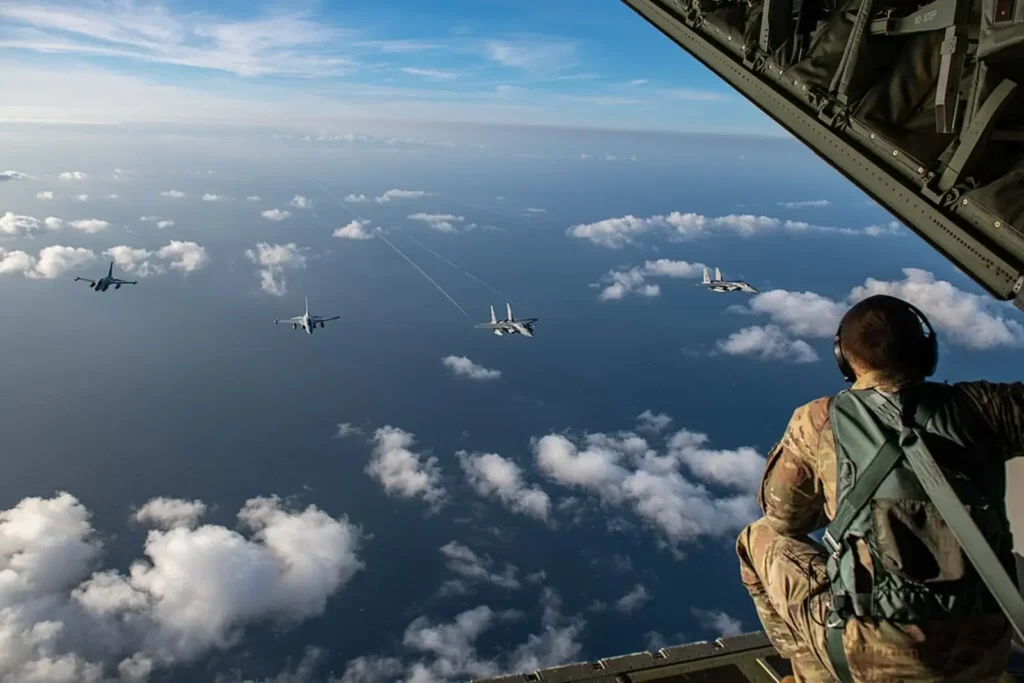The Philippine Air Force (PAF) is embarking on a crucial phase of modernization, focusing on acquiring up to 20 or more multi-role fighter jets to enhance its capabilities and operational effectiveness. This significant development underscores the urgent need to bolster pilot training as part of a broader strategy to modernize the air force and address regional security challenges.
Current Capabilities and Modernization Goals
Currently, the PAF operates a fleet of 12 FA-50 fighter jets, which were acquired from South Korea. These aircraft have served as a key component of the air force’s inventory, but there is a growing recognition that they are insufficient for the evolving demands of national defense. As the PAF seeks to expand and modernize its fleet, it is evaluating more advanced multi-role fighters to complement or potentially replace the FA-50s.
The decision to acquire new multi-role fighters reflects a strategic imperative to enhance the air force’s capability to defend Philippine airspace and project power in the region. The push for modernization comes amidst escalating regional tensions and an increasing need for a more formidable air defense system.
International Exercises Highlight Training Needs
In a notable development, Philippine pilots are participating for the first time in the multinational Pitch Black war games, held in northern Australia. This prestigious exercise brings together 20 Indo-Pacific and European countries, featuring a diverse array of fighter jets from the United States, Britain, Australia, Singapore, Japan, and South Korea. The exercises are intensive, consuming approximately a million liters of aviation fuel daily and involving complex war tactics and skills testing.
Colonel Randy Pascua, the commander of the Philippine contingent at the Pitch Black exercises, has emphasized the importance of addressing a “significant technological gap” as the air force continues its modernization efforts. He highlighted that enhancing pilot skills is crucial for integrating new multi-role fighters effectively and improving overall operational readiness.
Strategic Implications for National Defense
The acquisition of more advanced multi-role jets is driven by the need for “faster and more lethal” aircraft, a requirement underscored by the limitations of the FA-50s in current defense scenarios. Military chief Romeo Brawner confirmed that the government has authorized the purchase of these advanced jets, although specifics regarding the types and numbers are still under review.
This modernization initiative is closely linked to the Philippines’ strategic focus on maritime domain awareness and joint operations with the navy. The country is building its air defenses in response to increasing tensions with China, particularly in the South China Sea, where territorial disputes have intensified. Strengthening the air force’s capabilities is seen as a critical component of the broader defense strategy.
Training and Operational Enhancements
Colonel Pascua’s remarks highlight the importance of international training exercises in advancing the Philippine Air Force’s capabilities. Participation in Pitch Black not only provides essential training opportunities but also strengthens the Philippines’ international partnerships and reinforces its commitment to regional security and stability.
As the air force continues to modernize, the emphasis on pilot training is crucial for maximizing the effectiveness of new multi-role fighter jets. Improved training programs will enable pilots to operate advanced aircraft more effectively, enhancing the overall operational capabilities of the PAF.
Future Outlook and Strategic Impact
The ongoing modernization and training efforts represent a significant step forward for the Philippine Air Force. By addressing technological gaps and enhancing pilot skills, the air force aims to build a more capable and responsive defense force that can meet the demands of current and future security challenges.
The strategic importance of these efforts is highlighted by the regional security dynamics and ongoing disputes in the South China Sea. As the PAF continues to expand and modernize its fleet, it is well-positioned to play a more active role in regional defense and contribute to maintaining stability in the Indo-Pacific region.
In summary, the Philippine Air Force’s focus on acquiring advanced multi-role fighters and ramping up pilot training is a critical element of its modernization strategy. These efforts are essential for enhancing national defense capabilities and ensuring that the air force can effectively respond to regional security challenges.
